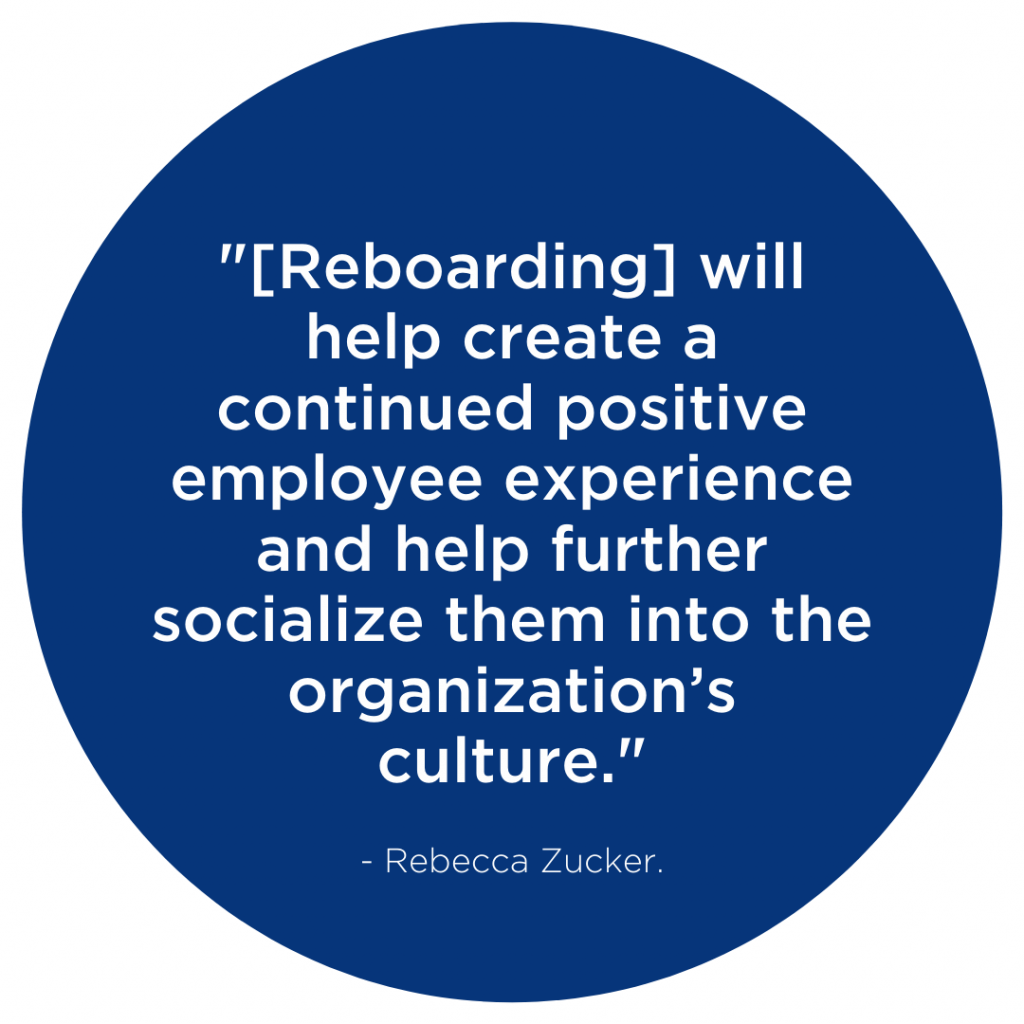How to support your employees through seasons of change.
It’s natural for organizations to experience seasons of change, and 2022 is no exception. Thanks to the pandemic, on top of expected workplace growth and adjustments, there are additional challenges to work through.
Leadership teams are working on reopening plans, and many have retention challenges to address. Supporting employees through these changes is a must for leaders who wish to show they value their team members and understand their needs.
Here are four strategies that leaders can use to support employees through seasons of change:
- Developing change communication plans,
- Re-onboarding employees,
- Holding career conversations, and
- Measuring employee engagement.
Change communication plans
A thought-out communications strategy is crucial when supporting employees through change. Based on years of benchmarking research, Prosci suggests a coordinated approach to developing communication in times of change.
Here are a few questions to consider when developing a change management communication strategy:

Who is delivering the message?
Too often, change communication comes from the project team. Research from Prosci found that employees prefer to hear about change from their immediate supervisor or the person leading change (change sponsor).
More specifically, employees want to hear about the reasons for the change from the change sponsor and the personal impacts of the change from their own immediate supervisor.
Why is this change happening?
When planning change communication, you need to proactively answer the inevitable “why” questions. Clearly stating why change is happening throughout all change communications will help employees process and understand the importance of the change.
What’s in it for me?
No matter how valuable or critical a coming change is, if employees don’t buy in or support it, the change will not be as effective. Having employees who don’t support a change may cause turnover, sour the workplace culture, or impact productivity.
After addressing why change is happening, you need to share how it will benefit your employees. Keep in mind that there could be different benefits for different employee groups, and you may need to adjust the message for each one.
How is the message being shared?
Prosci’s research identified face-to-face communications as the most effective way to share change management messages. Face-to-face meetings are great as they allow for two-way communication.
While face-to-face communication should be part of the mix, it is also important to communicate frequently, repeat the key messages and use a variety of channels to reach the audience.
Channels may include email, video calls (individual or team meetings), in person, intranet systems, and other online platforms for updates (such as Slack or Microsoft Teams chats).
Re-onboarding employees
While employees were hopefully onboarded during their initial few weeks or months on the job, a change in their work environment is an opportunity to reinforce aspects of the company culture and help orientate employees to the space.
“[Reboarding] will help create a continued positive employee experience and help further socialize them into the organization’s culture,” says Rebecca Zucker.
Who to re-onboard?
- Employees who have worked remotely for an extended time
- Employees returning from a leave of absence (such as maternity or paternity leave, disability leave, or sick leave)
- Employees changing work locations
What to cover in re-onboarding?
In her Harvard Business Review article, Zucker shared the following tips for re-onboarding employees.
- Orientate them to the space: Update returning employees on things that have changed while they were away, such as changes in offices or new procedures.
- Be thoughtful and welcoming: Providing a small gift, being open to answering questions, and being genuine through the process are easy ways to make a person feel welcomed. Avoid making it seem like you’re acting out of obligation.
- Connect them with a buddy: Zucker suggests pairing employees returning to the workplace with someone familiar with the office and culture.
- Integrate them into the workplace: To help make employees feel valued and a part of the team, announce their return to the office so others know they have returned / where they are working. You should also provide them with any changed policies, roles, or updates to their job description.

Hold career conversations to realign goals
Through times of change, our priorities and career goals can shift.
Career conversations are intentional discussions leaders can have with employees to learn about their personal career goals, align their aspirations with organizational goals, and enhance employee engagement. During seasons of change, holding an effective career conversation can help leaders retain top talent and understand where these individuals will fit in the organization’s succession plan.
These conversations are a proactive approach that helps leaders align employee development with business strategy and business needs. Instead of looking for opportunities outside of the organization, this approach encourages employees to stay, develop, and become a part of a strong succession plan.
Measure employee engagement
When workplaces are in a transition period, the stress of change can impact employee mindsets and cause employee engagement to dip.
When we contemplate how to accurately measure engagement, climate assessments and employee engagement surveys are two commonly used strategies to consider.
Employee engagement survey
Generally, employee engagement surveys aim to measure how employees are feeling about the factors that impact engagement in their role and with the organization. Engagement surveys can address:
- Employee satisfaction: The level of contentment or happiness a person assigns to the attributes of their job/position, their organization and the general or overall way they feel about their employment
- Employee commitment: The pride people feel for their organization as well as their intent to remain with the organization; their desire to serve or perform at high levels; whether they would positively recommend their organization to others; and their desire to improve the organization’s results.
Some avenues to consider exploring in a survey of this nature include how employees feel about their supervisor and leadership as a whole, their role, communications, teamwork, compensation, training, recognition, benefits, and working conditions. A well-designed engagement survey will provide accurate, meaningful, and insightful information which can be used to foster the development of high performing individuals and teams.
Focus groups are commonly used to take a deeper dive into the results of an employee engagement survey. This approach can allow organizations to understand the context of survey responses, which leads to more effective action plans to address areas of concern for continued employee engagement.
Climate assessments
Workplace climate assessments can provide a clear picture of the organizational climate and current challenges. Ideally, an assessment of this nature is delivered by an objective third party, to encourage employees to share their perspectives of the work environment freely and confidentially. Based on the size and setting of the organization, a combination of approaches could be used to gather employee perspectives, including online surveys, focus groups, and one-on-one interviews.
Employee perceptions of the work environment can then be analysed against relevant HR and motivation theories, and recommendations to improve employee engagement, work environment and conditions can be suggested for implementation.
Whether from growth or outside forces, change is inevitable. Using the strategies shared above can help leaders support employees through seasons of change and support the health of the organization.
